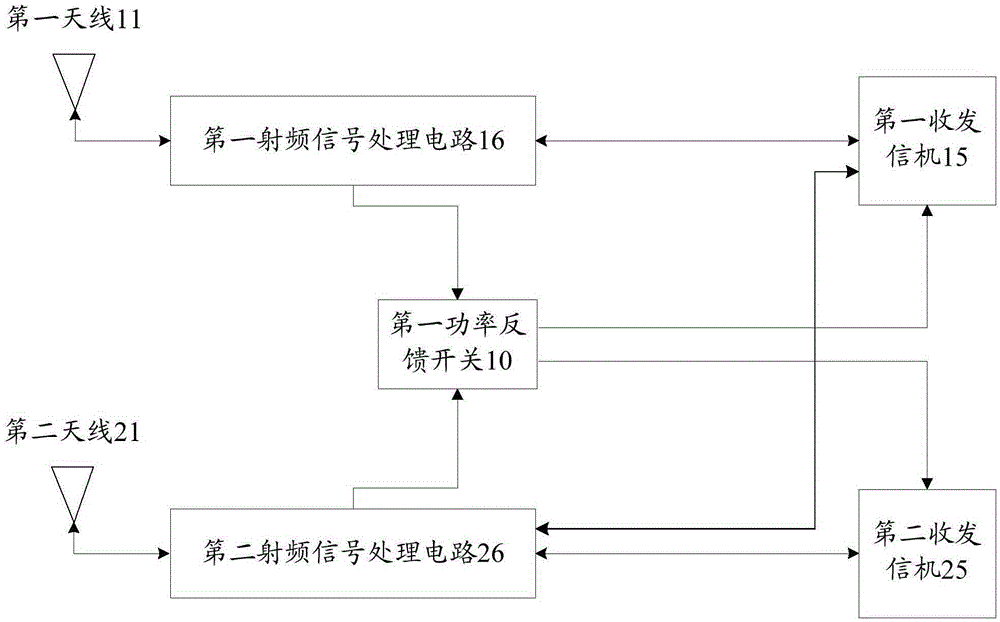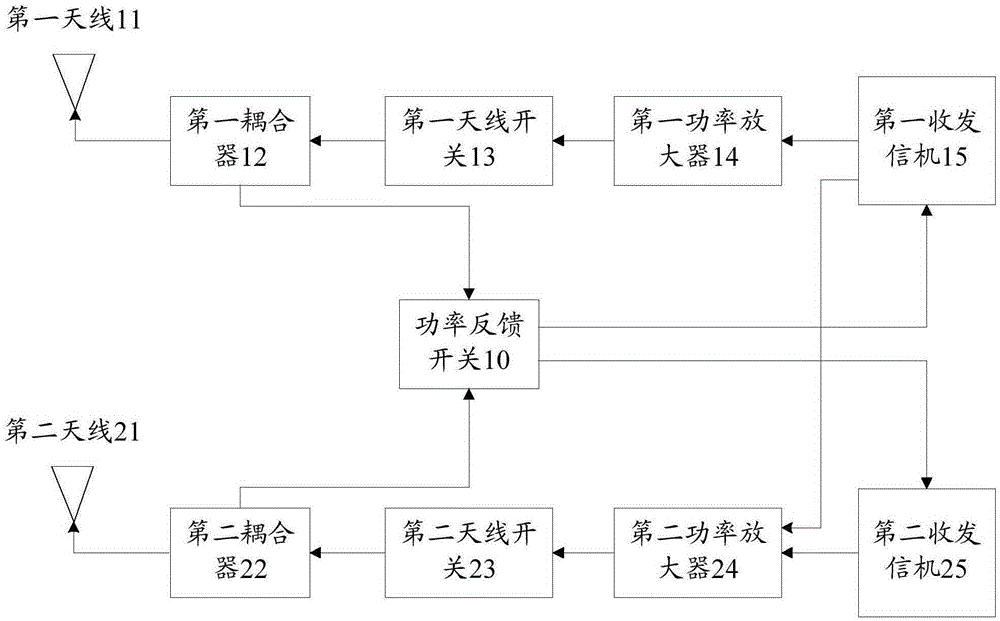Multi-antenna radio frequency circuit and radio-frequency signal processing method
A radio frequency signal and radio frequency circuit technology, applied in the field of signal processing, can solve the problems of insufficient bandwidth coverage of a single antenna, failure of multi-antenna multi-transceiver circuits, and the inability of a single antenna to further effectively widen the antenna bandwidth.
- Summary
- Abstract
- Description
- Claims
- Application Information
AI Technical Summary
Problems solved by technology
Method used
Image
Examples
Embodiment 1
[0152] This example takes dual antennas as an example. The workflow for the high-frequency band is as follows: the high-frequency signal is output from the main transceiver and enters the high-frequency power amplifier for amplification; the amplified high-frequency signal is connected to the high-frequency antenna switch through the high-frequency antenna switch. High-frequency coupler, high-frequency antenna switch realizes the connection between the hardware channel of different high-frequency bands and the high-frequency coupler; the high-frequency signal transmitted to the high-frequency coupler is divided into two channels, and the main signal is output through the high-frequency coupler To the high-frequency antenna, the high-frequency coupling signal is output from the coupling port of the high-frequency coupler, and transmitted to the main transceiver through the power feedback switch; the detector inside the main transceiver detects the high-frequency feedback signal, ...
Embodiment 2
[0155] This example takes three antennas as an example. The workflow for the high-frequency band is as follows: the high-frequency signal is output from the main transceiver and enters the high-frequency power amplifier for amplification; the amplified high-frequency signal is connected to the high-frequency antenna switch through the high-frequency antenna switch. High-frequency coupler, high-frequency antenna switch realizes the connection between the hardware channel of different high-frequency bands and the high-frequency coupler; the high-frequency signal transmitted to the high-frequency coupler is divided into two channels, and the main signal is output through the high-frequency coupler To the high-frequency antenna, the high-frequency coupling signal is output from the coupling port of the high-frequency coupler, and transmitted to the main transceiver through the power feedback switch; the detector inside the main transceiver detects the high-frequency feedback signal,...
PUM
 Login to View More
Login to View More Abstract
Description
Claims
Application Information
 Login to View More
Login to View More - Generate Ideas
- Intellectual Property
- Life Sciences
- Materials
- Tech Scout
- Unparalleled Data Quality
- Higher Quality Content
- 60% Fewer Hallucinations
Browse by: Latest US Patents, China's latest patents, Technical Efficacy Thesaurus, Application Domain, Technology Topic, Popular Technical Reports.
© 2025 PatSnap. All rights reserved.Legal|Privacy policy|Modern Slavery Act Transparency Statement|Sitemap|About US| Contact US: help@patsnap.com



